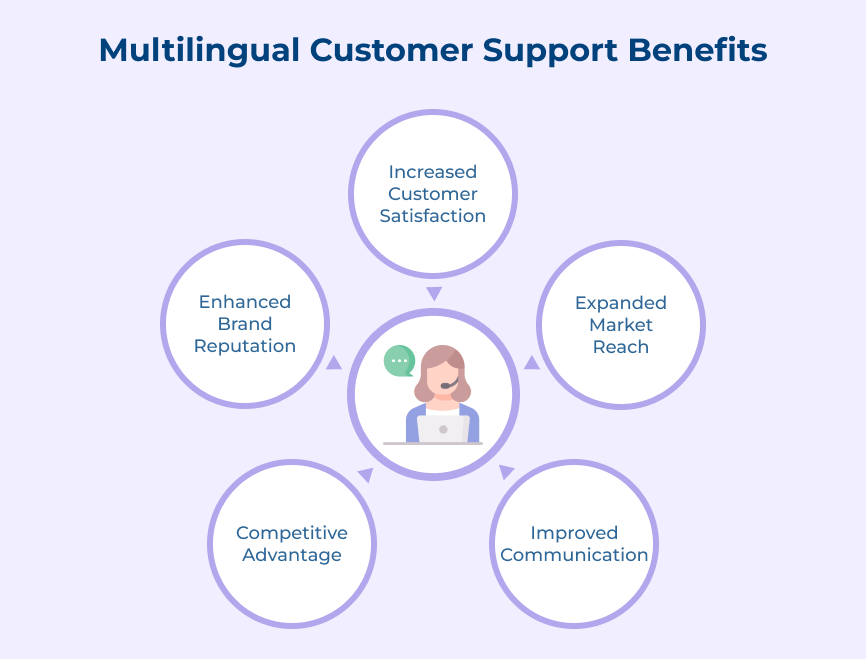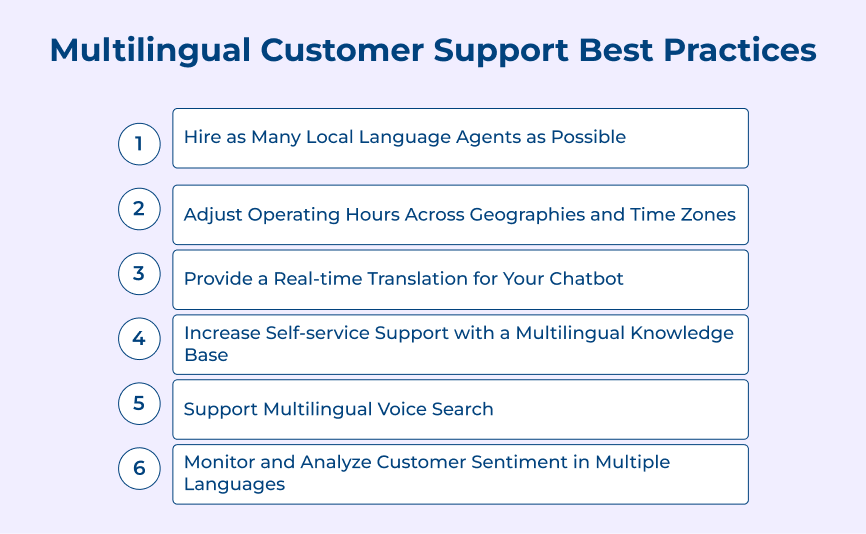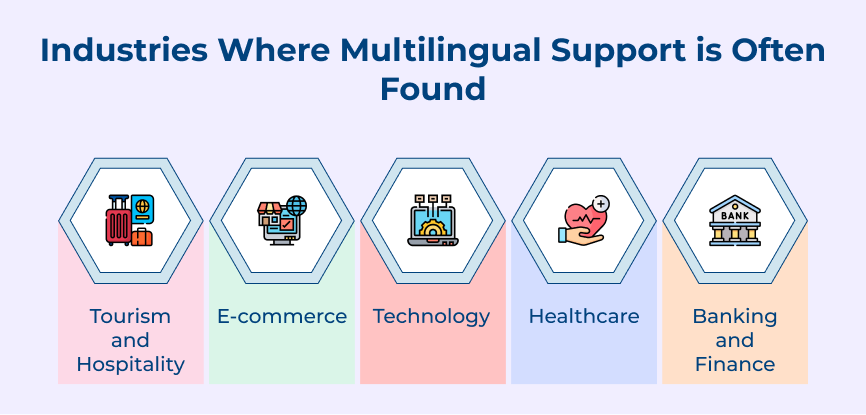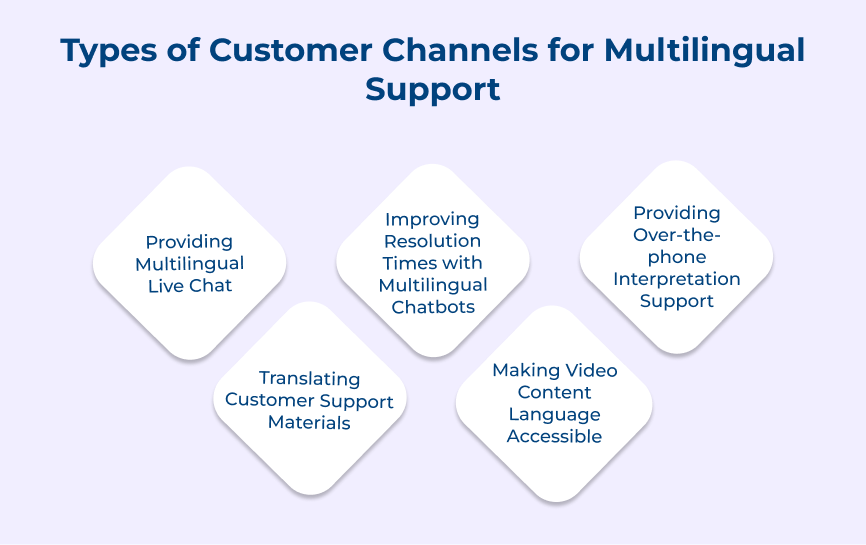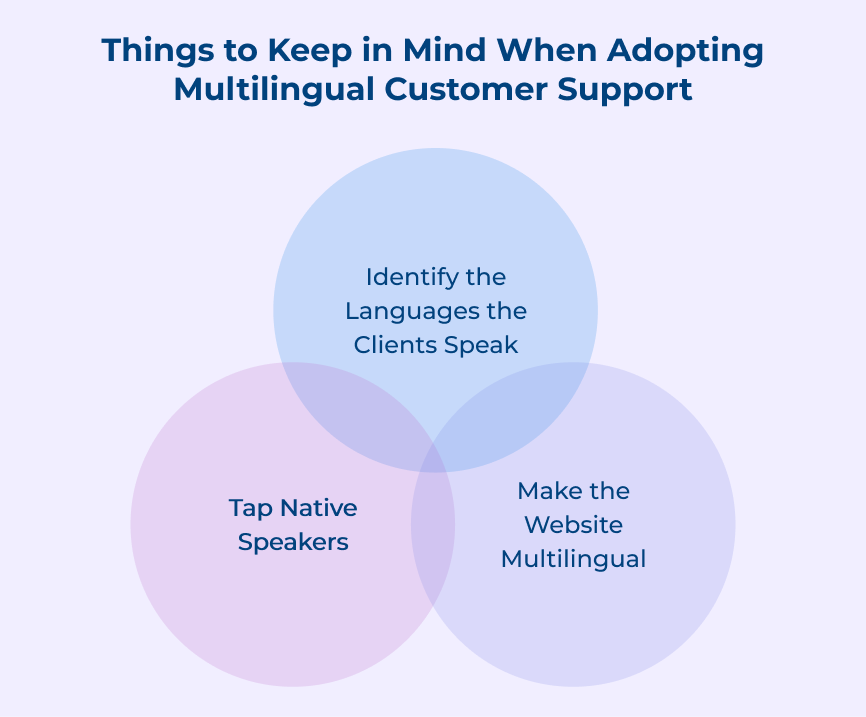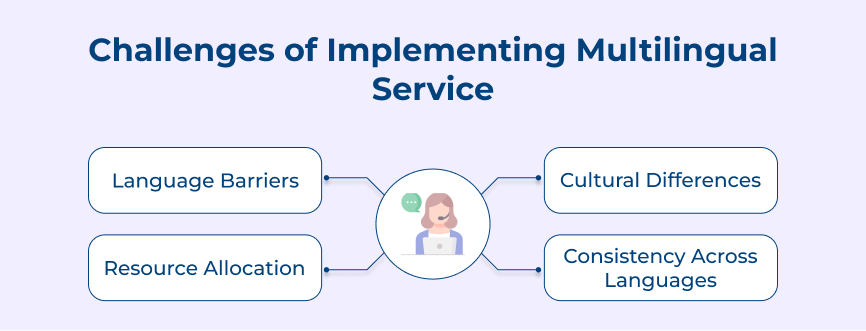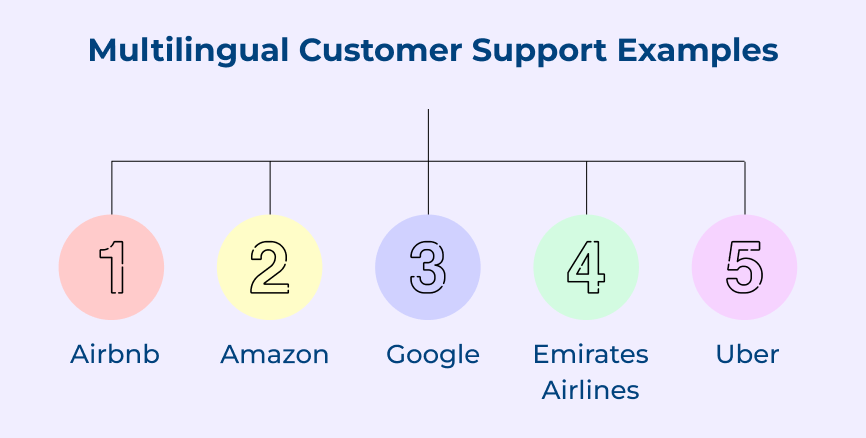1. Hire as Many Local Language Agents as Possible
One effective strategy to provide multilingual support is to hire as many local language agents as possible. Having staff members who are fluent in the languages spoken by the diverse customer base, businesses can ensure that all customers receive the assistance they need in their preferred language. 33% of EU businesses struggle to fill multilingual customer support roles due to a lack of language skills.
Let’s explore an example of a multinational corporation that operates in multiple countries and can benefit greatly from hiring local language agents. Having agents who speak the languages of each country where the company operates, can provide personalized and efficient customer support to customers in each region.
Pro tips:
- Conduct thorough language assessments to ensure that hired agents are truly fluent in the languages they will be supporting.
- Provide ongoing training for agents to maintain and improve their language skills.
- Utilize technology such as translation tools or language-specific customer support platforms to enhance communication and streamline processes.
2. Adjust Operating Hours Across Geographies and Time Zones
Adjusting operating hours across geographies and time zones is a key strategy to provide multilingual customer support. Adjusting operating hours across geographies and time zones allows businesses to cater to a diverse customer base, providing support in multiple languages. The strategy helps create a more inclusive and accessible customer experience, as customers feel valued when they can communicate with support teams in their native language.
Let’s take an example of a global e-commerce company that operates in multiple countries and can benefit greatly from this strategy. Aligning customer support hours with the peak shopping times in different regions and ensuring that multilingual representatives are available allows the company to offer personalized support to customers worldwide.
Pro tips:
- Utilize technology to manage and schedule support staff across different time zones efficiently.
- Conduct thorough market research to identify peak customer service hours in each region.
- Implement a seamless communication system to ensure smooth collaboration and coordination between multilingual support teams across geographies.
3. Provide a Real-Time Translation for your Chatbot
Providing real-time translation for the organization’s chatbot is a crucial strategy in offering multilingual support. It allows chatbots to communicate with customers in their preferred language, breaking down language barriers and ensuring a seamless customer experience. Incorporating real-time translation allows businesses to cater to a diverse customer base and expand their reach in global markets.
A use case for this strategy would be a multinational e-commerce company using a chatbot on its website to assist customers with product inquiries and purchases. Integrating real-time translation capabilities allows the chatbot to engage with customers in multiple languages, providing accurate and timely support regardless of the customer’s language preference.
Pro tips:
- Choose a reliable translation tool or API that can accurately translate messages in real time.
- Customize the chatbot responses to maintain a consistent tone and brand voice across different languages.
- Monitor the performance of the real-time translation feature regularly to ensure accuracy and optimize the customer support experience.
4. Increase Self-Service Support With a Multilingual Knowledge Base
Providing multilingual customer service is essential for businesses to effectively communicate with their diverse customer base. Creating a knowledge base with information in multiple languages allows businesses to empower customers to find answers to their questions independently, in their preferred language.
Let’s take an example of a travel agency that could create a multilingual knowledge base with information on booking procedures, travel destinations and visa requirements in several languages. It would enable customers from different countries to access the information they need without language barriers.
Pro tips:
- Use translation tools or hire professional translators to accurately translate content into different languages.
- Implement a user-friendly search function to help customers easily find relevant information in their preferred language.
- Regularly update and expand the knowledge base to ensure all customer queries are addressed comprehensively.
5. Support Multilingual Voice Search
Supporting multilingual voice search is a key strategy to provide multilingual customer service. 57% of users utilize voice search every day. The strategy involves optimizing the website and content to be easily understood by voice search in multiple languages. It allows businesses to cater to the needs of customers who prefer to interact with technology in their native language which results in improving their overall customer experience.
One use case of this strategy is implementing a multilingual voice search on the website or customer service platform. It allows customers to easily navigate the site or find information in their preferred language using voice commands, making it more convenient for them to access the support they need.
Pro tips:
- Use natural language processing technology to accurately interpret and respond to voice queries in in multiple languages.
- Ensure the website is optimized for multilingual SEO to increase visibility and accessibility for customers searching in different languages.
- Provide training and support for customer service agents who may need to assist customers using multilingual voice search, ensuring a seamless experience for all users.
6. Monitor and Analyze Customer Sentiment in Multiple Languages
Monitoring and analyzing customer sentiment in multiple languages is a crucial strategy when providing multilingual customer support. Understanding how customers feel about the products or services across different languages allows organizations to tailor support efforts to meet their unique needs. One way to implement it is by utilizing sentiment analysis tools that can automatically detect and analyze customer feedback in various languages.
The tools can help organizations quickly identify patterns allowing organizations to respond promptly and effectively to customer inquiries or concerns. A use case for this strategy is a global e-commerce company that receives customer feedback in multiple languages. Monitoring and analyzing customer sentiment allows the company to gain insights into customer preferences, identify areas for improvement and provide personalized support in different languages.
Pro tips:
- Utilize machine translation tools to easily translate customer feedback into the preferred language for analysis.
- Implement sentiment analysis software that can categorize and prioritize customer sentiments for quick action.
- Regularly analyze customer sentiment data to identify emerging trends and continuously improve your multilingual customer support efforts.
Industries Where Multilingual Support is Often Found
Check out the key industries where multilingual support is not just beneficial but often essential for success in reaching and retaining a diverse clientele.






